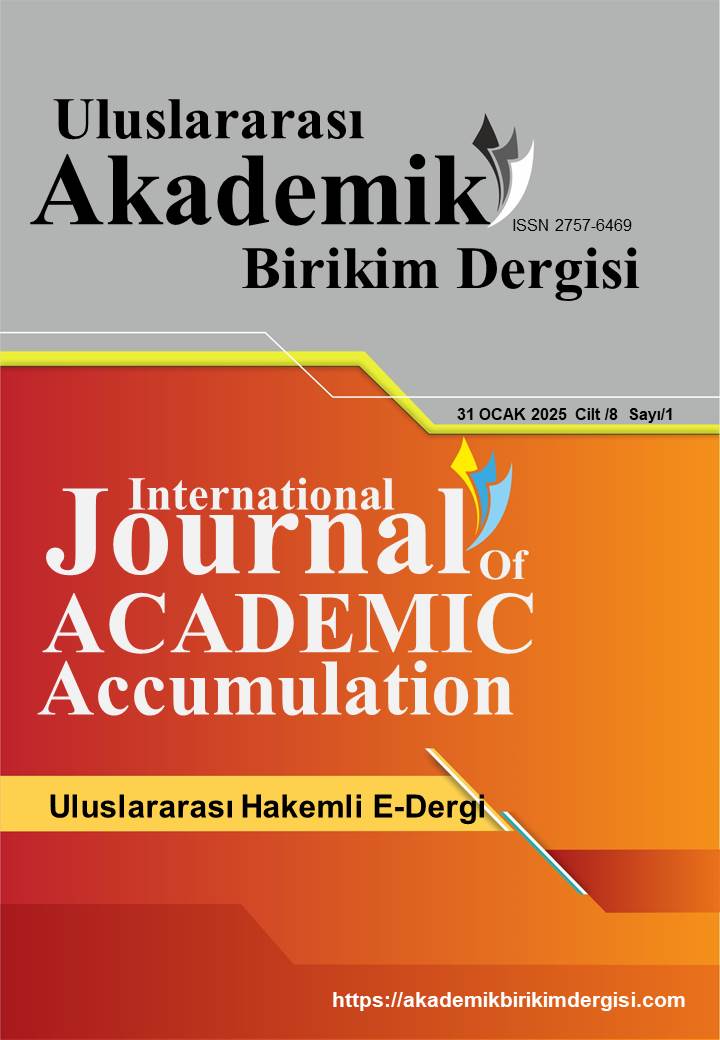Nefret Söylemi: Metinsel Boyuttan Görsel Boyuta Geçiş Ve Toplumsal Etkileri
Anahtar Kelimeler:
Nefret Söylemi, Görsel Medya, Toplumsal Kutuplaşma, Dijital PlatformlarÖzet
Bu çalışma, nefret söyleminin metinsel boyuttan görsel boyuta evrilmesini ve bu dönüşümün toplumsal etkilerini incelemektedir. Dijital platformlarda yaygınlık kazanan görsel nefret söylemi, manipüle edilmiş görüntüler, mizahi veya alaycı içerikler aracılığıyla hızla yayılmaktadır. Bu çalışma, bu tür görsel unsurların bireyler ve toplum üzerindeki psikolojik ve sosyal etkilerini tartışmakta, aynı zamanda görsel nefret söyleminin medya aracılığıyla normalleşme sürecini ele almaktadır. Bulgular, bu içeriklerin önyargıları pekıştirerek toplumsal kutuplaşmayı arttırdığını ve ayrımcılığı normalleştirdiğini göstermektedir. Görsel nefret söylemi ile mücadele etmek için bireylerin medya okuryazarlığını geliştirmesi ve algoritmik düzenlemelerin daha etkili hale getirilmesi gerekmektedir.
Referanslar
Brink, D. O. (2001). Millian Principles, Freedom of Expression and Hate Speech. Legal Theory.
Brown-Sica, M., & Beall, J. (2008). Definitions of Hate Speech and Their Discontents. Mass Communication and Society.
De Brún, A., McAuliffe, E., & Macdonald, S. (2014). Social Media and the Spread of Hate Speech: An Exploratory Study. Information, Communication & Society.
Delgado, R., & Stefancic, J. (2014). Hate Speech in Cyberspace. In Understanding Words That Wound.
Erjavec, K., & Kovačič, M. P. (2012). “You Don't Understand, This Is a New War!”: Analysis of Hate Speech in News Web Sites’ Comments. Mass Communication and Society.
Göregenli, M. (2009). Irk Kavramı ve Sosyal Psikoloji. The Blackwell Encyclopedia of Sociology.
Göregenli, M. (2009). Nefret Suçları: Kimin Sorunu? Kaos GL.
Harriman, S., Tuffin, K., & Welch, R. (2020). Disrupting the Discourse: Combating Hate Speech in Online Environments. Journal of Media Psychology.
Jamaluddin, B. A., & Briel, H. (2024). Visual Hate Speech and Its Discontents: Young Adult Chinese and Malaysians’ Perception of Visual Hate Speech. International Journal of Communication.
Kilvington, D. (2021). The Virtual Stages of Hate: Using Goffman’s Work to Conceptualize the Motivations for Online Hate. Media, Culture & Society, 43(2), 256–271.
McCluskey, M. (2020, July 22). These TikTok Creators Say They’re Still Being Suppressed for Posting Black Lives Matter Content. TIME.
Messaris, P., & Abraham, L. (2001). The Role of Images in Framing News Stories. In Framing Public Life.
Paivio, A., & Csapo, K. (1973). Picture Superiority in Free Recall: Imagery or Dual Coding?. Cognitive Psychology.
Paz, M. A., Montero-Díaz, J., & Moreno-Delgado, A. (2020). Hate Speech: A Systematized Review. SAGE Open. DOI: 10.1177/2158244020973022.
Ribeiro, M. H., Pedro, H. C., Yuri, A. S., Virgílio, A. F. A., & Wagner, M. J. (2018). Characterizing and Detecting Hateful Users on Twitter. AAAI Conference on Web and Social Media.
Sabat, I., Johnson, A. F., & Joffe, H. (2019). Images and Memes in Online Hate Speech: Symbolic Representations and Their Impact on Perceptions. Journal of Communication Research.
Sosyal Değişim Derneği (2010). Ulusal Basında Nefret Suçları: 10 Yıl, 10 Örnek.
Tajfel, H., & Turner, J. C. (1979). An Integrative Theory of Intergroup Conflict. In The Social Psychology of Intergroup Relations.
Tsesis, A. (2002). How Hate Speech Paves the Way for Harmful Social Movements. New York: New York University Press.
Wang, S. (2024). The Power of Images: How Multimodal Hate Speech Shapes Prejudice and Prosocial Behavioral Intentions. Social Media + Society. DOI: 10.1177/20563051241292990.
Wanniarachchi, V. U., Scogings, C., Susnjak, T., & Mathrani, A. (2023). Hate Speech Patterns in Social Media: A Methodological Framework and Fat Stigma Investigation Incorporating Sentiment Analysis, Topic Modelling and Discourse Analysis. Australasian Journal of Information Systems.

